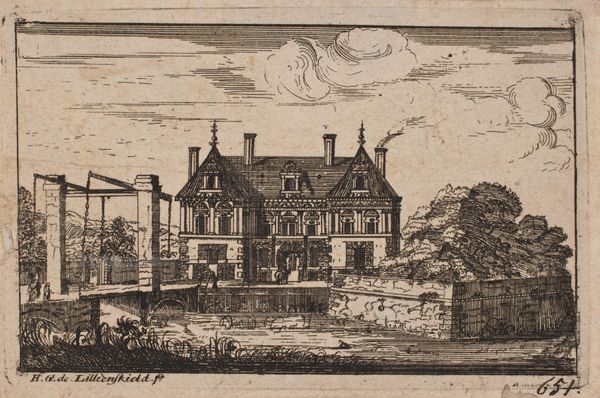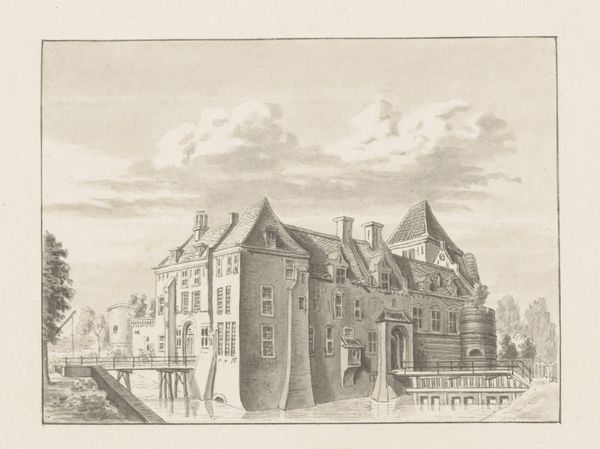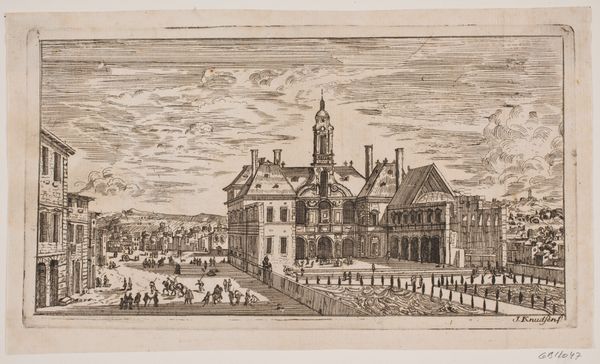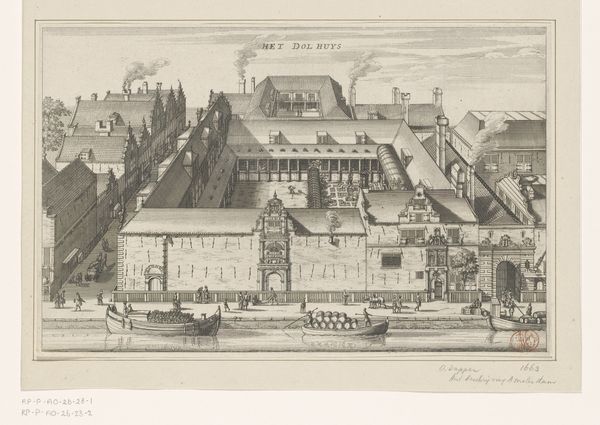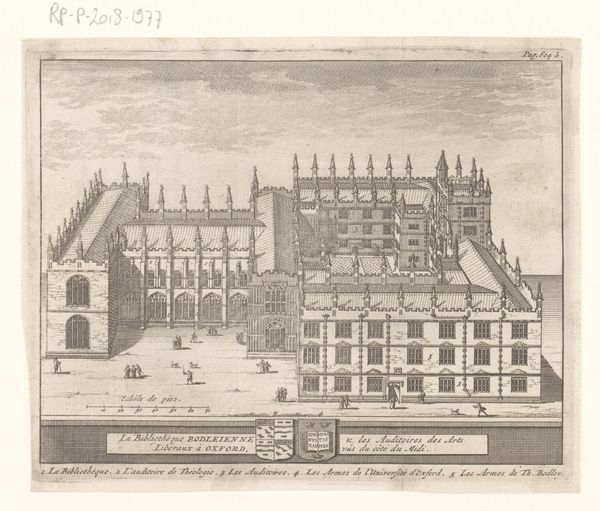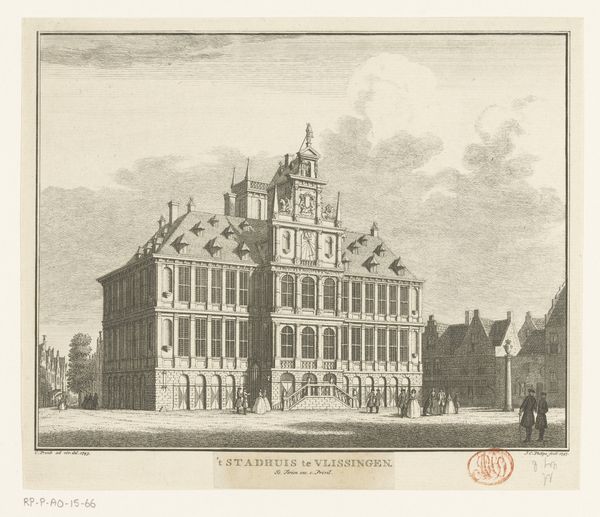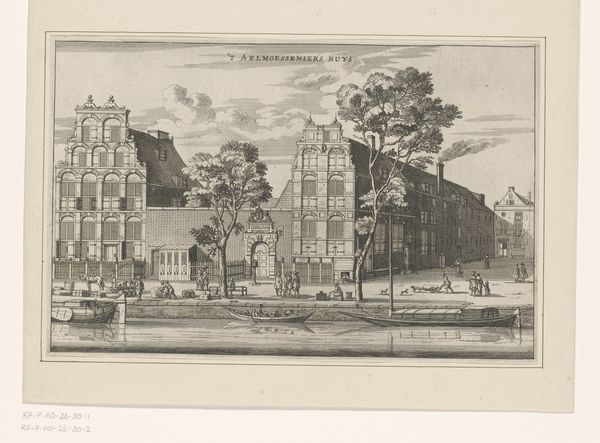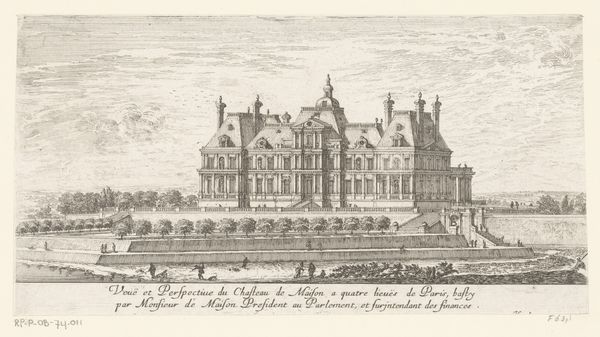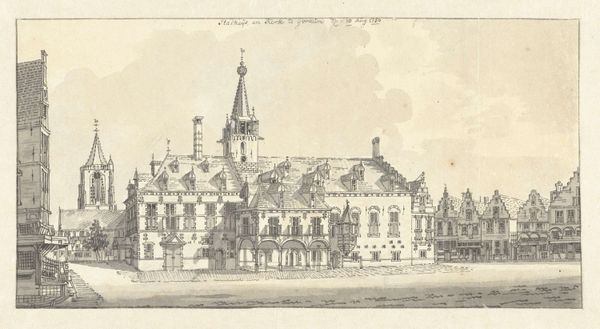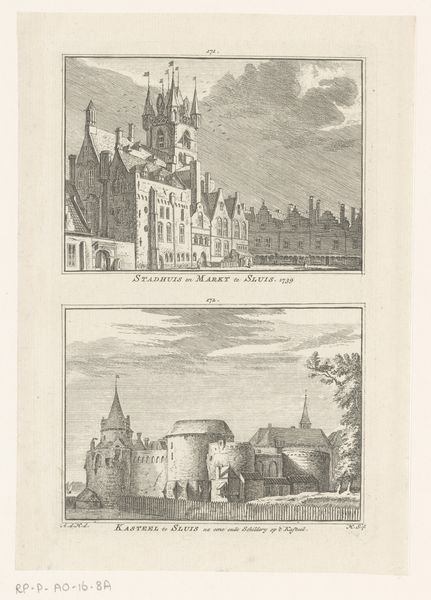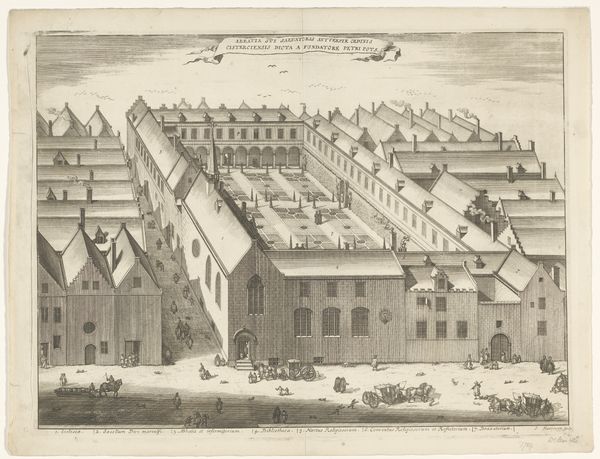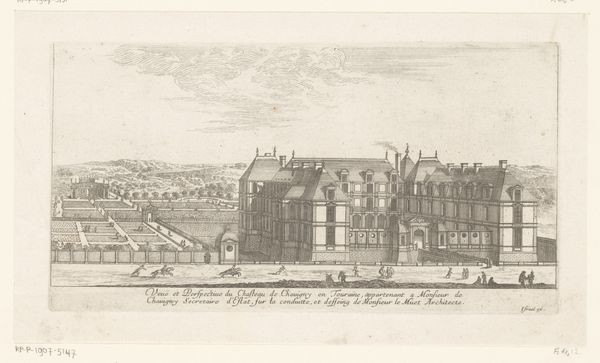
drawing, print, etching, engraving, architecture
#
drawing
#
historical design
# print
#
etching
#
cityscape
#
northern-renaissance
#
engraving
#
architecture
Dimensions: height 364 mm, width 529 mm
Copyright: Rijks Museum: Open Domain
Curator: This is a reproduction print or drawing, made after 1886, depicting the Boterwaag, or Butter Weigh House, in Nijmegen. Editor: Immediately, the careful hatching strikes me. It's incredibly detailed, almost photographic, but with a strange coolness to it. There's a remoteness to the scene despite its apparent clarity. Curator: The precision is indeed notable. Looking at the lines, one can observe the etcher's meticulous attempt to recreate the architectural textures and geometries. Note the inclusion of what appears to be the building's floor plan as well. Editor: Placing this artwork within its historical context reveals intriguing layers. Built in 1612 and rebuilt in 1856, the Boterwaag wasn't merely a building. It was an institution that mediated the trade of butter, reflecting the economic and social fabric of Nijmegen. Curator: Precisely. The composition, viewed through semiotic analysis, presents the Boterwaag as an almost monumental emblem of civic authority. The geometric lines lead our eyes toward it, imposing an orderly structure to commerce. The play of shadow and light offers a sense of depth that reinforces this formal dominance. Editor: But there's a paradox, isn't there? This image, produced well after the Boterwaag's function would have shifted considerably, seems to romanticize a bygone era of local commerce. It's not just a representation of a building but an image imbued with nostalgic sentiment, almost staging its public role. Curator: A keen observation. That slight blurring of the historical fact contributes an elegiac quality that brings complexity. A close examination reveals that this etching or engraving, created well after its original subject had been altered, serves as a commentary on shifting civic identity and economic transformations. Editor: Thinking about its potential display, I imagine the curatorial challenge. Should it be exhibited with other cityscapes, underscoring its place within that genre? Or alongside other images that detail market systems? I believe its greatest potential will be realized by investigating the multiple socio-political contexts. Curator: I would lean towards the artistic merit of the work; one can use careful aesthetic detailing to investigate themes relevant to socio-historical phenomena, but that must not become a priority at the expense of appreciating the line, composition, texture, and other formal qualities. Editor: Well, as always, a synthesis will be critical to creating a nuanced encounter. The artwork asks important questions from a myriad of vantage points, providing new perspectives to consider.
Comments
No comments
Be the first to comment and join the conversation on the ultimate creative platform.
